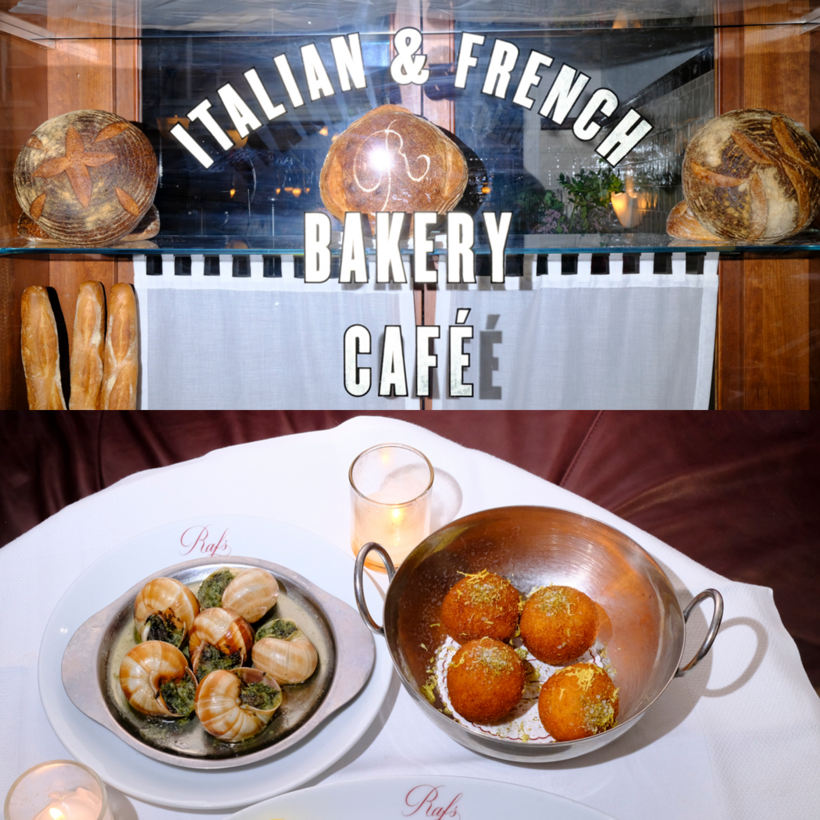One of the joys of raising kids in New York is pointing out landmarks from your past. “That’s where Daddy lived when he met Mommy.” “That’s where I got mugged at gunpoint in 1989.” “They used to sell smack out of that storefront before it became a Sweetgreen.”
After asking what smack was, and my quickly changing the subject, my son, who was then around five and must have seen an endless number of construction sites throughout the day, looked up at me and said, “Daddy, when are they going to be finished building New York?”
It was the kind of question that could only come from the developing brain of a child. But it was a good question. New York, like all cities, only more so, is both finished and unfinished, a perpetual work in progress. Things change, usually for the worse, but occasionally for the better.

The other day, while walking up Elizabeth Street between Houston and Bleecker, I was lucky enough to stumble on something new—or new to me, anyway—that gave me hope for the city’s dining scene. It’s a short and narrow block, a city planner’s afterthought, with a surprising number of trees for such a shady street. There’s a bar called Tom & Jerry’s that’s been there since 1993—the only recognizable landmark for me.
This isn’t a block that gets much foot traffic, so it’s not an ideal location to open a restaurant. And yet that’s exactly what I found: an elegant little “Italian & French Bakery Café,” according to the gold-foiled signage in the window, with “Raf’s” in script on its door. Baguettes and loaves of peasant bread filled one of its windows. It looked familiar, the kind of upscale neighborhood café dotting every European city, somehow both foreign and perfectly at home here.
“Daddy, when are they going to be finished building New York?”
I walked in, took a seat at the pink marble bar, and ordered a double espresso. I looked over the menu: oysters, salads, two pastas, an omelet. I hadn’t planned on eating until I saw the Iberico Collar Milanese. Whether Teutonic, Italian, or Japanese, a pounded, breaded, fried piece of meat renders me powerless. Resistance was futile.
Typically served with arugula and tomatoes, this fatty, nutty piece of ibérico had a salad of thinly sliced celery and cherry peppers and a little scoop of neonata—a spicy and salty Southern Italian tapenade made from Calabrian chiles, anchovies, and sardines—which elevates everything it touches. The crunchiness of the celery blended so well with the sweetness of the cherry peppers, the subtle heat and brininess of the neonata, and the marbled Spanish pork collar that it instantly became my new favorite lunch dish. I walked home with a baguette under my arm, vowing to return for dinner.
Raf’s is not new. In fact, it’s more than a year old now, almost an eternity in New York restaurant years. Nor is it unknown. The friends I mentioned it to either raved about it or complained that they could never get a table. It was no surprise to find out that Raf’s, which received two stars from The New York Times a few months after it opened, is pedigreed. One of its owners, Jennifer Vitagliano, opened the Musket Room, a block south on the same street, about a decade ago.

An instant hit, the Musket Room received a Michelin star four months after it opened. In 2020, Vitagliano brought in a new chef, Mary Attea, and the food got even better. The restaurant’s dining room—understated and rustic modern, with blue leather on its seats and banquettes, and rough-hewn wood floors—is one of my favorites in the city. Vitagliano’s twin sister, Nicole, joined the team as a partner when Vitagliano opened Raf’s. Attea handles the food here, too, and Camari Mick oversees the pastries and bread. This same foursome, it was just announced, will be handling food at the Twenty Two, the New York location of the London-based hotel, restaurant, and private members’ club, which is opening later this year off Union Square.
While the Musket Room offers a more casual setting, the food is heavier on presentation than it is at Raf’s, each dish’s components thoughtfully and artistically arranged. Raf’s is a more upscale room with simpler food and presentation. Compared to the Musket Room, Raf’s appears to cater to an older crowd, at least on the evening I visited. Maybe it’s a longing for old-world elegance, maybe it’s just aging, but, increasingly, I prefer it that way. I didn’t see anyone taking selfies, or pictures of their food, or talking at a decibel level inappropriate for a public space.
The Iberico Collar Milanese instantly became my new favorite lunch dish. I walked home with a baguette under my arm, vowing to return for dinner.
We started with the selection of daily breads, served with butter and olive oil: Why choose? The olive oil was made by the Sicilian wine producer Occhipinti. (It was so good, I bought a bottle online the second I got home.) We ordered the warm fresh ricotta; the escargot; the arancini, with mortadella, Taleggio, and lemon—because who can say no to that lineup—and the agnolotti, filled with creamy chicken liver and topped with morel mushrooms. Everything was excellent, especially the agnolotti.
There is a wood oven in the middle of the open kitchen in the back, and that’s the key to Raf’s entreés. High heat and smoke do wonderful things to food. The half-chicken, cooked with chunks of bread that soak up the pan jus, is a signature dish. The dorade, and the leeks vinaigrette, with stracciatella and hazelnuts, are also standouts.
Stuffed, we were ready to skip dessert, but allowed ourselves to be talked into ordering the white-chocolate budino and cheesecake, and I’m glad we were. Maybe it’s the responsibility of wearing a uniform emblazoned with the restaurant’s logo, but the service was excellent, to the point that I didn’t want to let them down.

Raf’s is a throwback to a different age, an elegant neighborhood restaurant in a city that has mostly turned its back on elegance and neighborhood restaurants. It rejects gimmicks and contrived flashiness for quiet sophistication. It reminded me of what restaurants used to be like before smartphones, social media, and those awful “foodfluencers” appeared on the scene.
So many restaurateurs have become convinced that everything can, and should, be a global brand with an outpost in Vegas or some autocratic petro-state, and a line of pasta sauces. Raf’s aims only to be a refuge from the modern world. It takes pleasure in execution over showmanship, and in doing the simple things well. It’s what a New York restaurant should be. What a relief.
Dana Brown is a Columnist at AIR MAIL. A former deputy editor at Vanity Fair, he is the author of the memoir Dilettante: True Tales of Excess, Triumph, and Disaster

